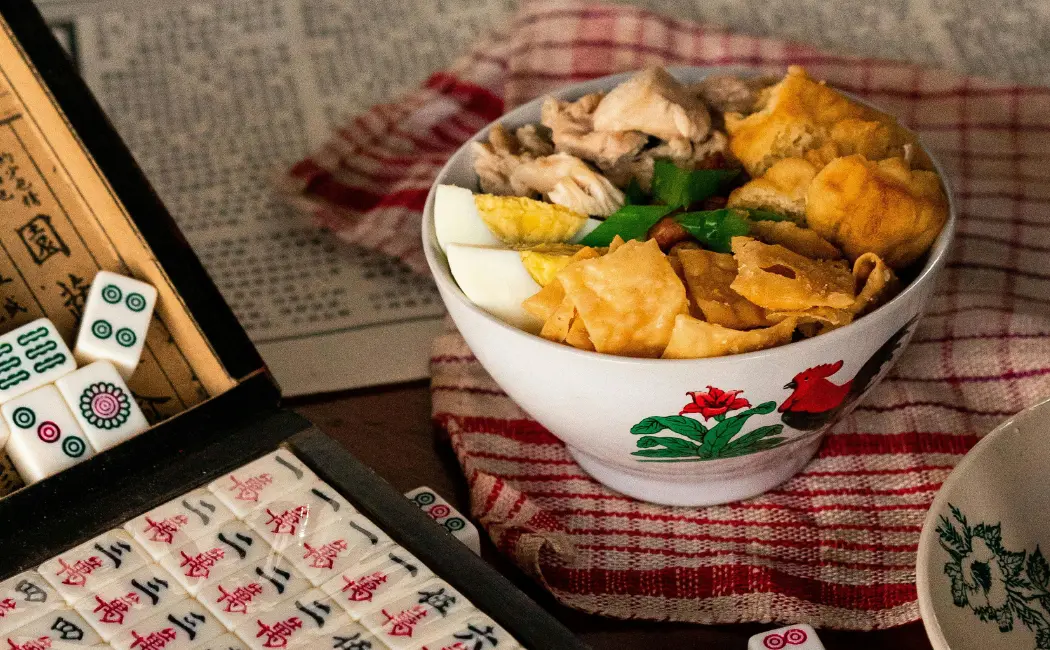Bibimbap, Korea’s iconic rice bowl dish, has captivated the hearts and taste buds of food enthusiasts worldwide with its vibrant colors, varied textures, and harmonious flavors.
This signature Korean delight has become synonymous with the country’s culinary philosophy, showcasing the importance of balance, simplicity, and community.
You May Also Like: Spices: The OG Flavor Bombs (Sorry, Salt and Pepper, You’re Basic)
History and Origins
Bibimbap’s origins date back to the 16th century, during the Joseon dynasty.
The name “Bibimbap” literally means “mixed rice,” reflecting the dish’s core concept. Initially, Bibimbap was a humble, peasant food, utilizing leftover ingredients.
Authentic Ingredients and Preparation
A traditional Bibimbap recipe requires:
- White Rice: Freshly cooked, fluffy rice.
- Assorted Vegetables: Bean sprouts, zucchini, carrots, shiitake mushrooms.
- Protein: Beef, usually ribeye or sirloin, sliced thinly.
- Kimchi: Spicy, fermented Korean cabbage.
- Gochujang Sauce: Sweet and spicy chili paste.
To prepare authentic Bibimbap:
- Cook rice and vegetables separately.
- Grill or stir-fry beef.
- Assemble ingredients in a bowl.
- Add gochujang sauce and kimchi.
- Mix all components together.
Regional Variations
While traditional Bibimbap hails from Jeonju, regional variations exist:
- Jeonju-Style: Original version, featuring beef and vegetables.
- Busan-Style: Seafood-rich version, with raw fish and seafood.
- Vegetarian Bibimbap: Plant-based version, substituting meat with tofu.
Cultural Significance
Bibimbap embodies Korean culture:
- Community: Bibimbap is often served family-style.
- Balance: Reflects Korean emphasis on harmony and balance.
- Simple yet Nutritious: Showcases Korean culinary philosophy.
Health Benefits
Bibimbap offers numerous health benefits:
- Protein-Rich: Beef and vegetables provide lean protein.
- Fiber-Rich: Rice, vegetables, and kimchi contain dietary fiber.
- Antioxidant-Rich: Vegetables and gochujang sauce contain antioxidants.
Celebrity Chefs’ Takes
Renowned chefs share their Bibimbap interpretations:
- Roy Choi: Adds Korean chili flakes and pickled ginger.
- David Chang: Incorporates spicy gochugaru and crispy garlic.
- Hiroyuki Sakai: Uses Japanese-inspired ingredients, like wagyu beef.
Modern Twists and Innovations
Contemporary chefs experiment with Bibimbap:
- Vegan Bibimbap: Plant-based alternatives.
- Bibimbap Burrito: Fusion of Korean and Mexican flavors.
- Bibimbap Bowl with Egg: Added protein and creaminess.
Conclusion
Bibimbap’s harmonious balance of flavors, textures, and colors has solidified its position as Korea’s national dish.
By understanding its origins, authentic preparation, and cultural significance, we can appreciate the beauty and simplicity of this iconic rice bowl.
References
- “Korean Cooking” by Hi Soo Shin.
- “Bibimbap: A Recipe’s Evolution” by The Korea Times.
- “Everyday Korean” by Kim Sunée.
Fact Box
- Originated in 16th-century Joseon dynasty.
- Name “Bibimbap” means “mixed rice.”
- Traditional ingredients: white rice, assorted vegetables, protein, kimchi, and gochujang sauce.
- Regional variations exist throughout Korea.
- Rich in protein, fiber, and antioxidants.










